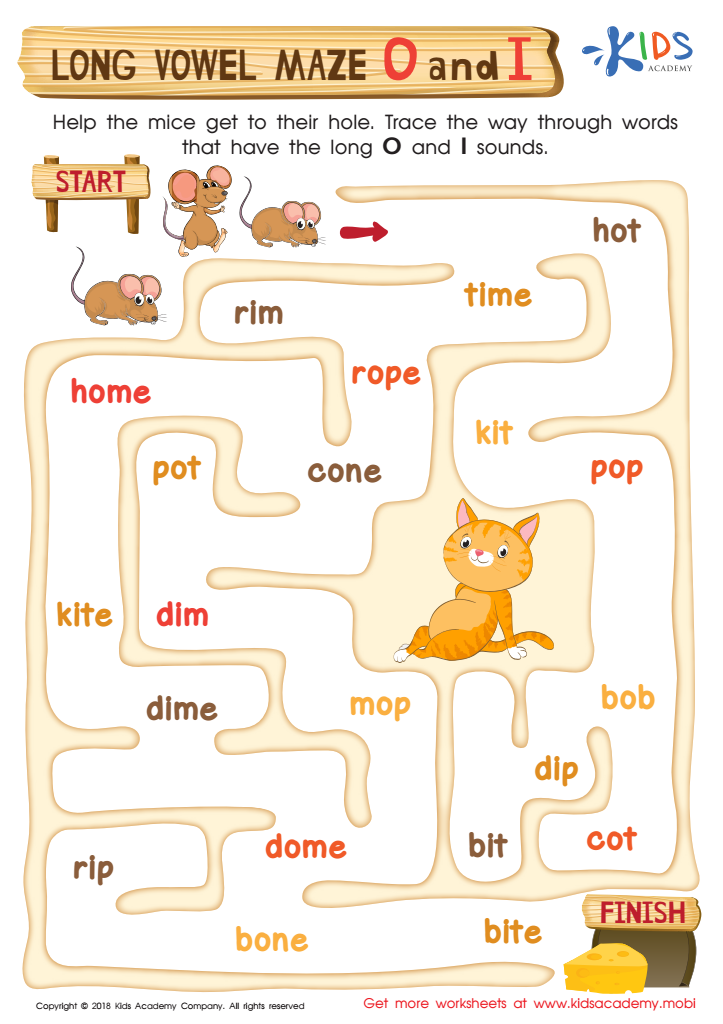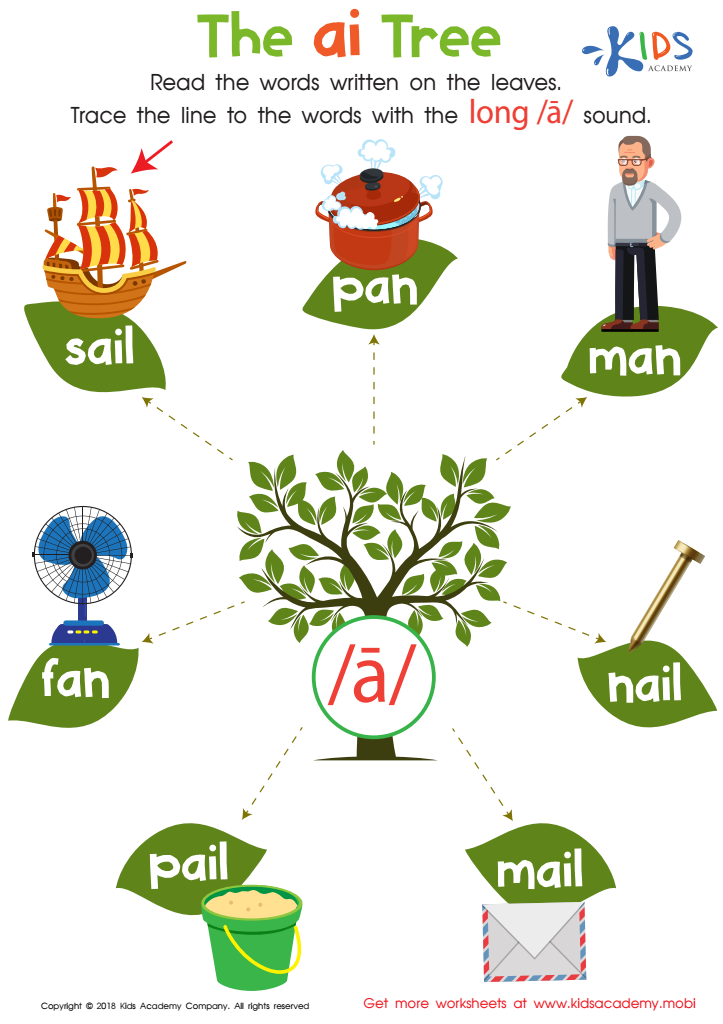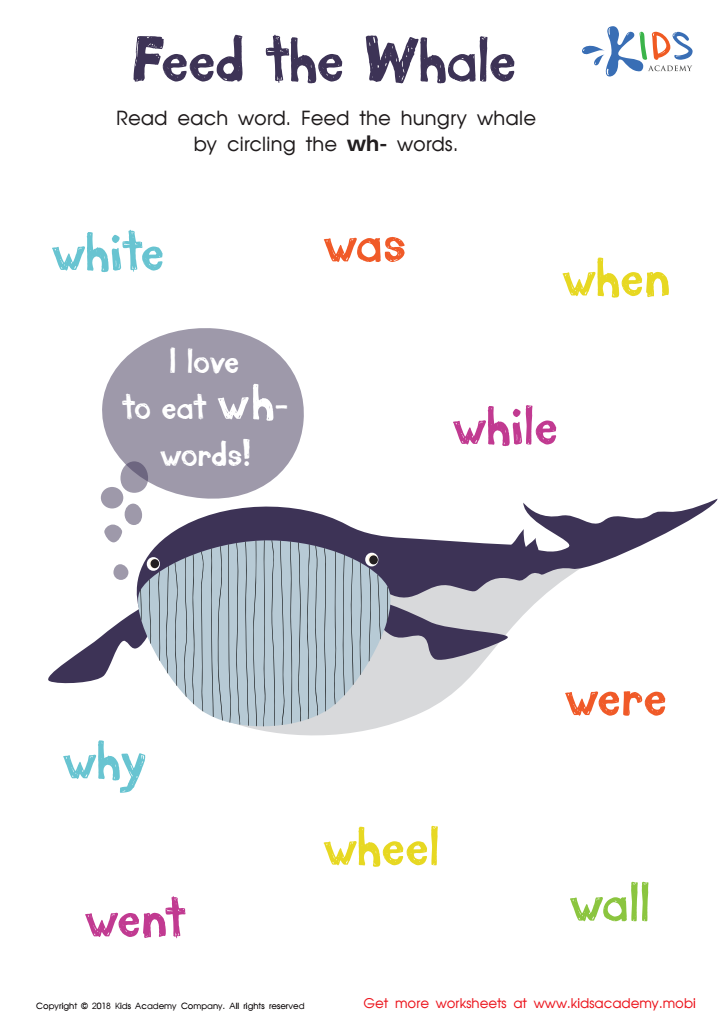Hand-eye Coordination Phonics Worksheets for Ages 5-9
5 filtered results
-
From - To
Enhance your child’s learning with our engaging Hand-eye Coordination Phonics Worksheets designed for ages 5-9! These interactive resources combine essential phonics skills with fun activities to improve coordination and fine motor skills. Your little learners will enjoy tracing letters, matching pictures to sounds, and completing stimulating games that reinforce early literacy. Ideal for both classroom use and home practice, our worksheets foster crucial connections between sight and action, ensuring your child develops confidence in their reading abilities. Build a strong foundation for phonics learning while keeping kids entertained! Explore our creative worksheets today and watch your child's skills soar!


Long Vowel Maze /o/ and /i/ Worksheet


The AI Tree Worksheet


Long and Short U Worksheet


Feed the Whale Worksheet


Long and Short E Worksheet
Hand-eye coordination is an essential skill for children aged 5-9, particularly when it comes to learning phonics, which is the relationship between sounds and letters. This developmental phase is critical as children begin to read and write, requiring them to coordinate visual input with physical responses, such as holding pencils and forming letters or tracking words on a page.
Parents and teachers should care about enhancing hand-eye coordination through phonics because it lays the groundwork for literacy, a fundamental skill for academic success and everyday life. Activities that combine hand-eye coordination with phonics, like letter tracing, matching games, or writing exercises, make learning more engaging and kinesthetic, catering to various learning styles.
Furthermore, improved hand-eye coordination can boost confidence in young learners, reducing frustration associated with reading and writing tasks. As children develop these motor skills alongside phonics knowledge, they gain the ability to recognize letters, sounds, and words more easily, driving their progress in language development.
Ultimately, fostering hand-eye coordination through phonics equips children with a strong foundation for literacy, thereby enhancing their love for learning and empowering them to unlock future academic opportunities. These skills, introduced at a young age, support lifelong learning and cognitive development.

 Assign to My Students
Assign to My Students




















